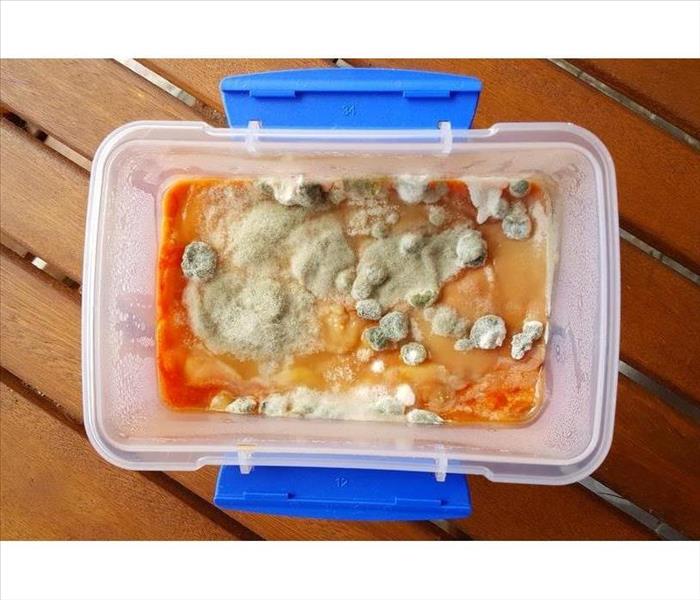How To Handle Mold Growth on Food
9/23/2019 (Permalink)
Witnessing mold growth on your food can be an uncomfortable experience. It’s often a sign of an underlying problem in your home. If you notice the dreaded black, blue or green fuzz growing on your bread, vegetables or fruits, simply throwing the food away is not enough. These tips are great for homeowners who want to responsibly inhibit mold damage to their property.
Causes of a Mold Outbreak
Common causes of mold in Woodbury, TN include:
- High humidity
- Water damage to your walls
- Impure air
Mold can thrive on food because it needs nutrients to grow. It often pops up on bread stored in the back of a cupboard or breadbox because the area is moist and dark. Many people don’t know that mold growth on food might mean that there are millions of invisible spores in the air that can spread rapidly, sometimes in a few hours.
Mold Remediation Techniques
Fortunately, anyone can complete steps to prevent their food from spoiling. Keeping bread and other food items in the fridge is a great start. The colder temperatures stop mold in its tracks so you can inspect your home for the root cause.
Check for water leaks that can damage the interior of your property. Water leaks are often undetected, but sometimes there are signs such as water marks or slow drips underneath your sink. Calling residential mold experts for a yearly checkup can save you the hassle of figuring it out on your own.
Safely dispose contaminated food by putting it in a plastic bag and taking the trash out of your home as soon as possible. Clean the infested area with soap and water to kill the harmful bacteria.
Mold growth on your food should be handled with care instead of panic. Remove the spoiled items and remember to take these precautions to complete a responsible mold cleanup.





 24/7 Emergency Service
24/7 Emergency Service
